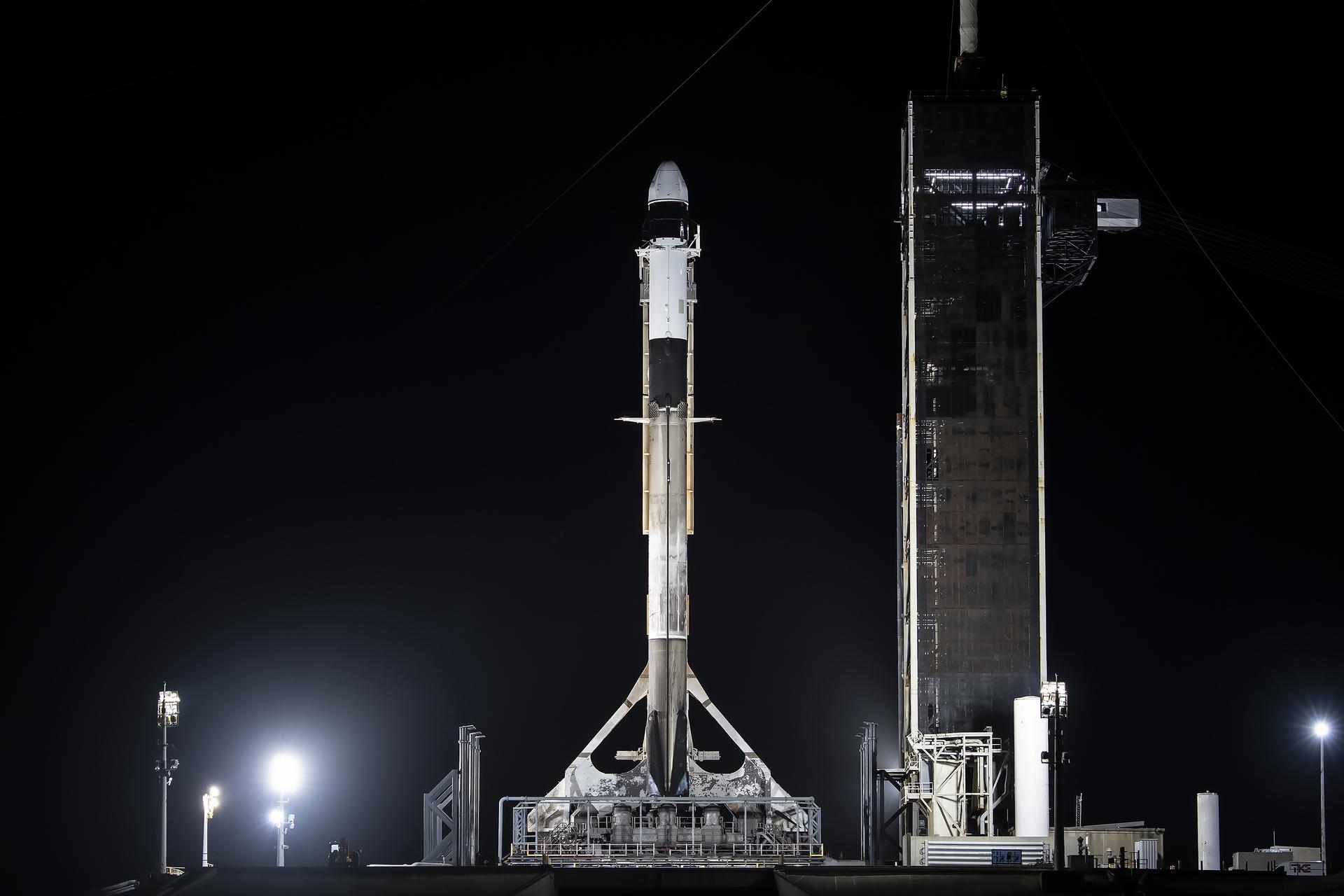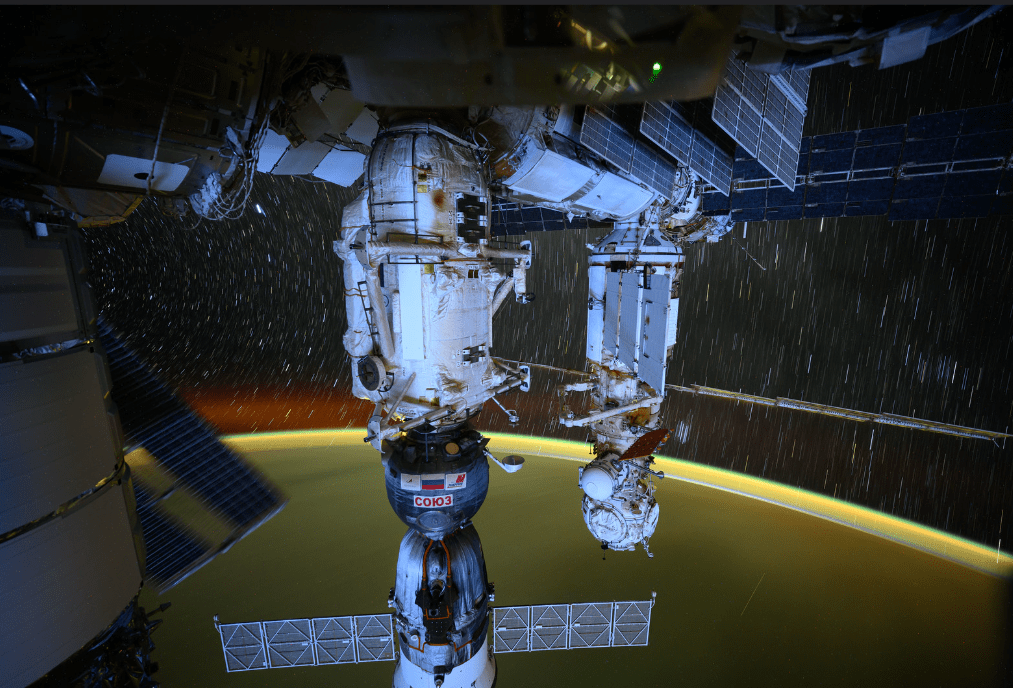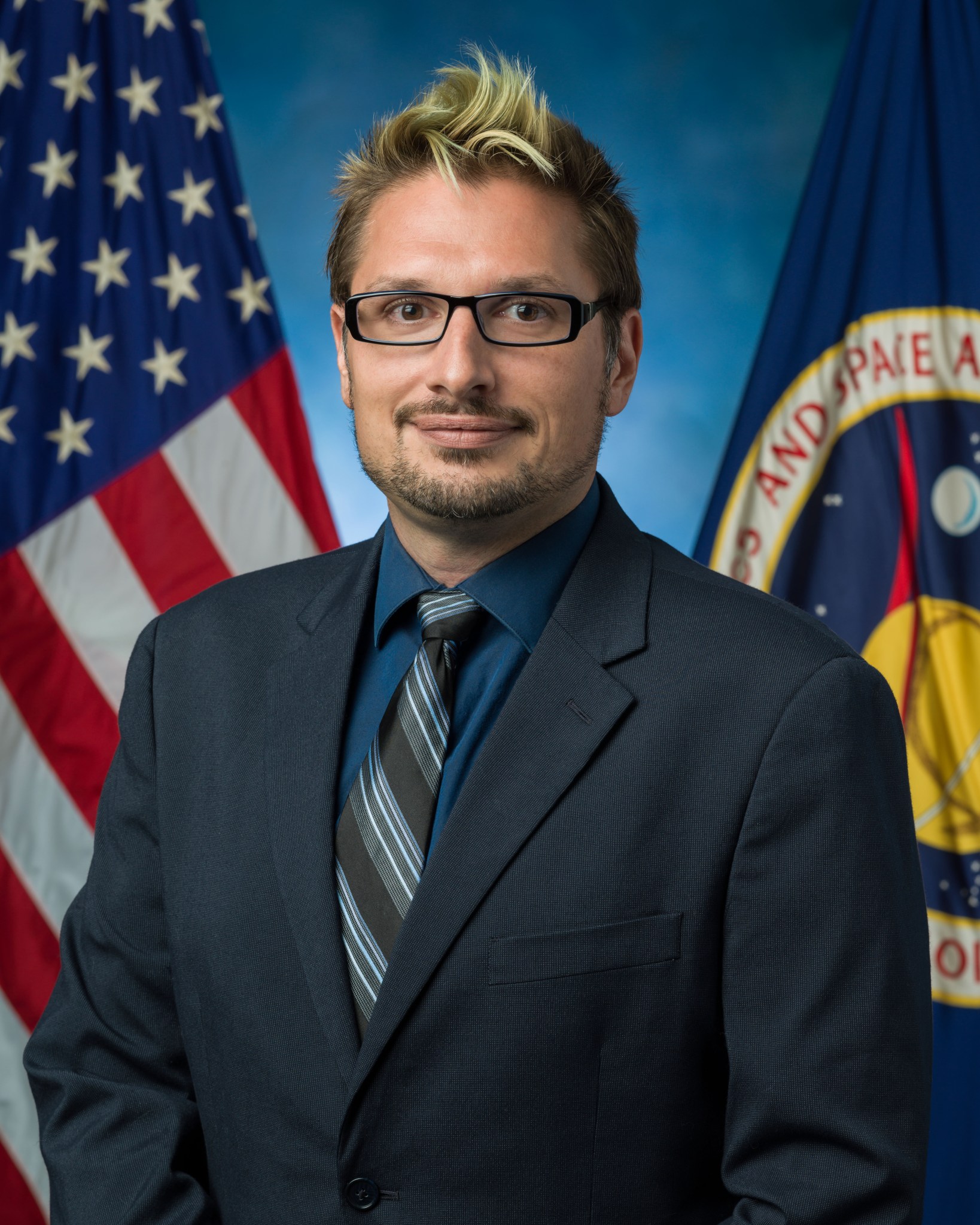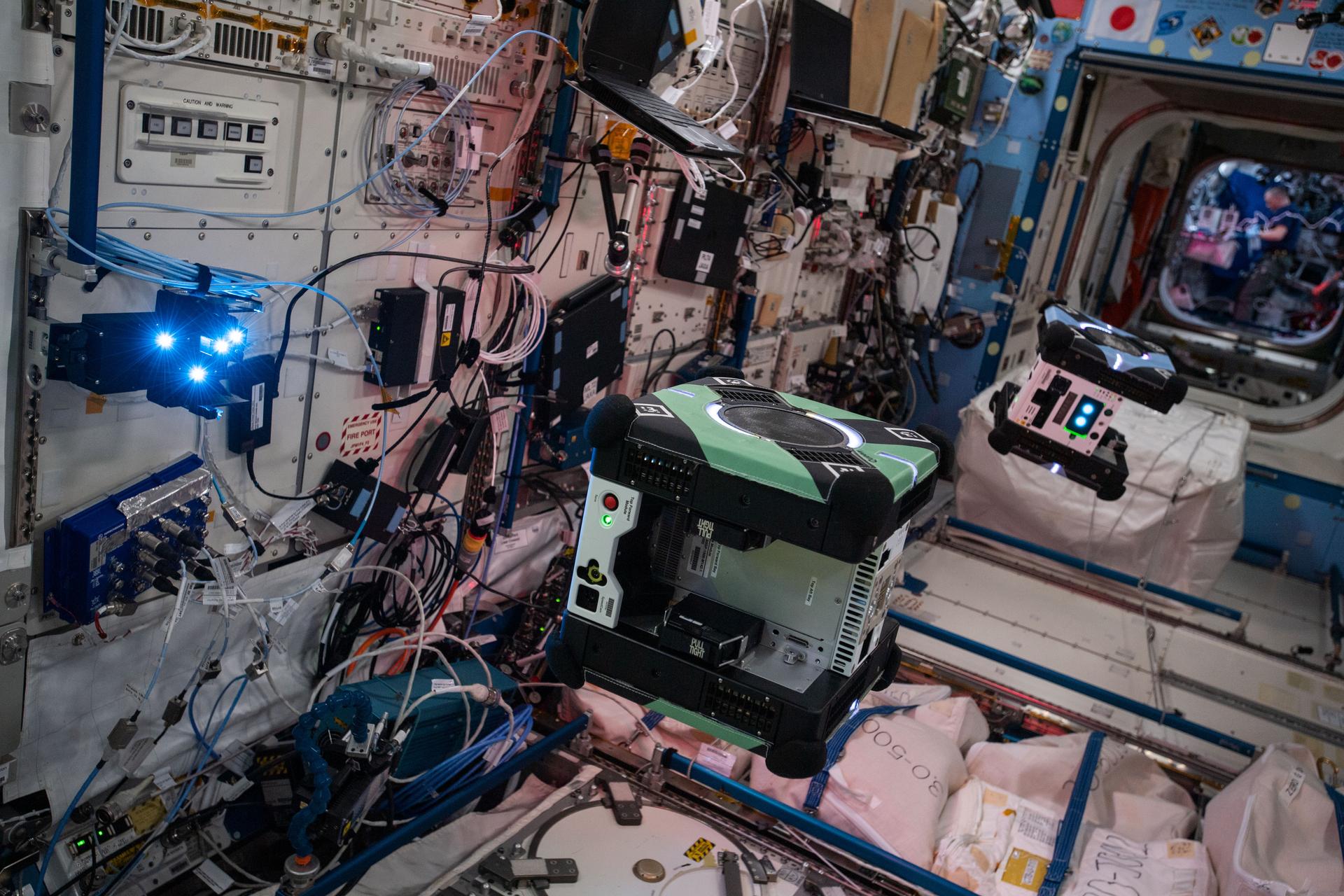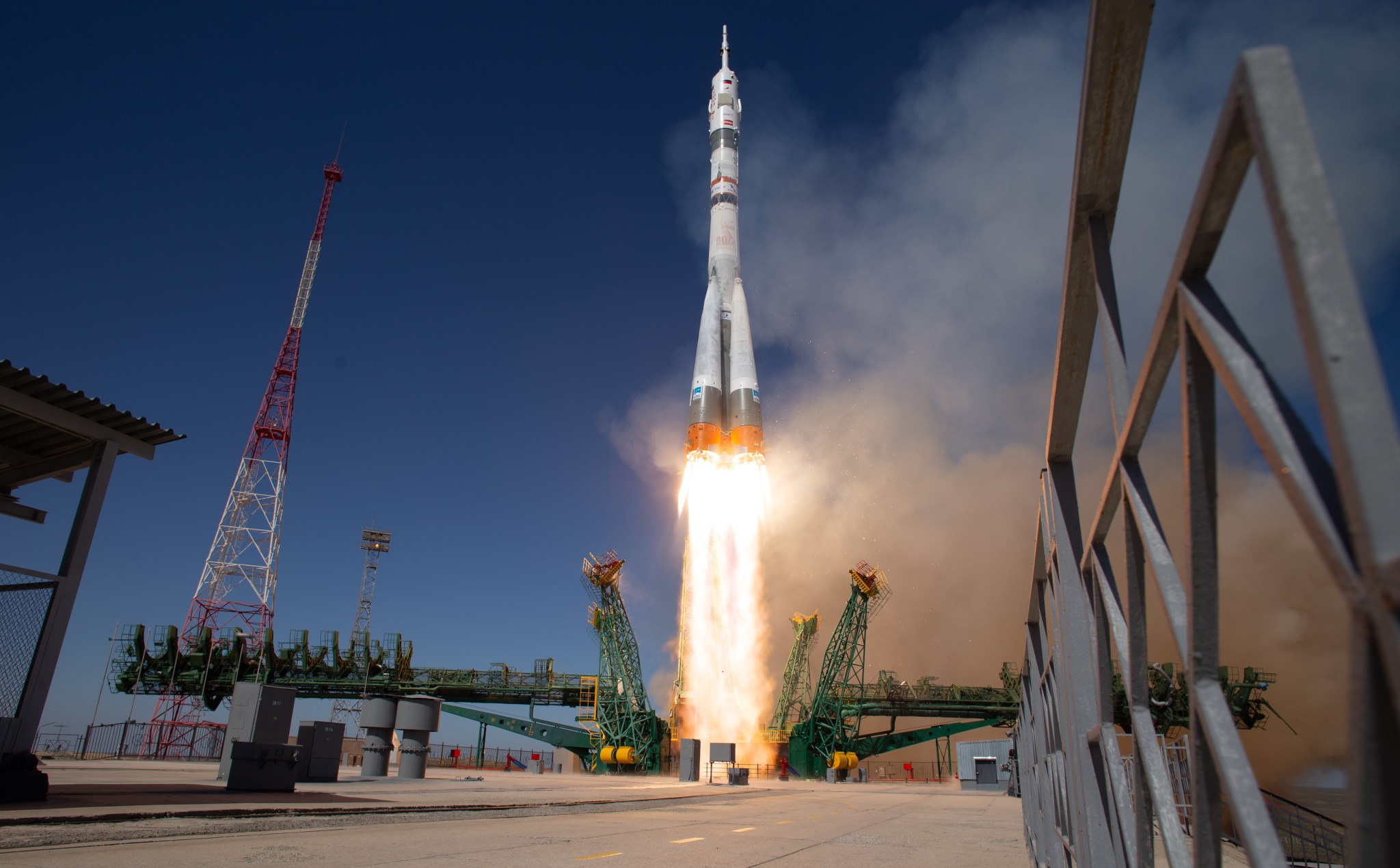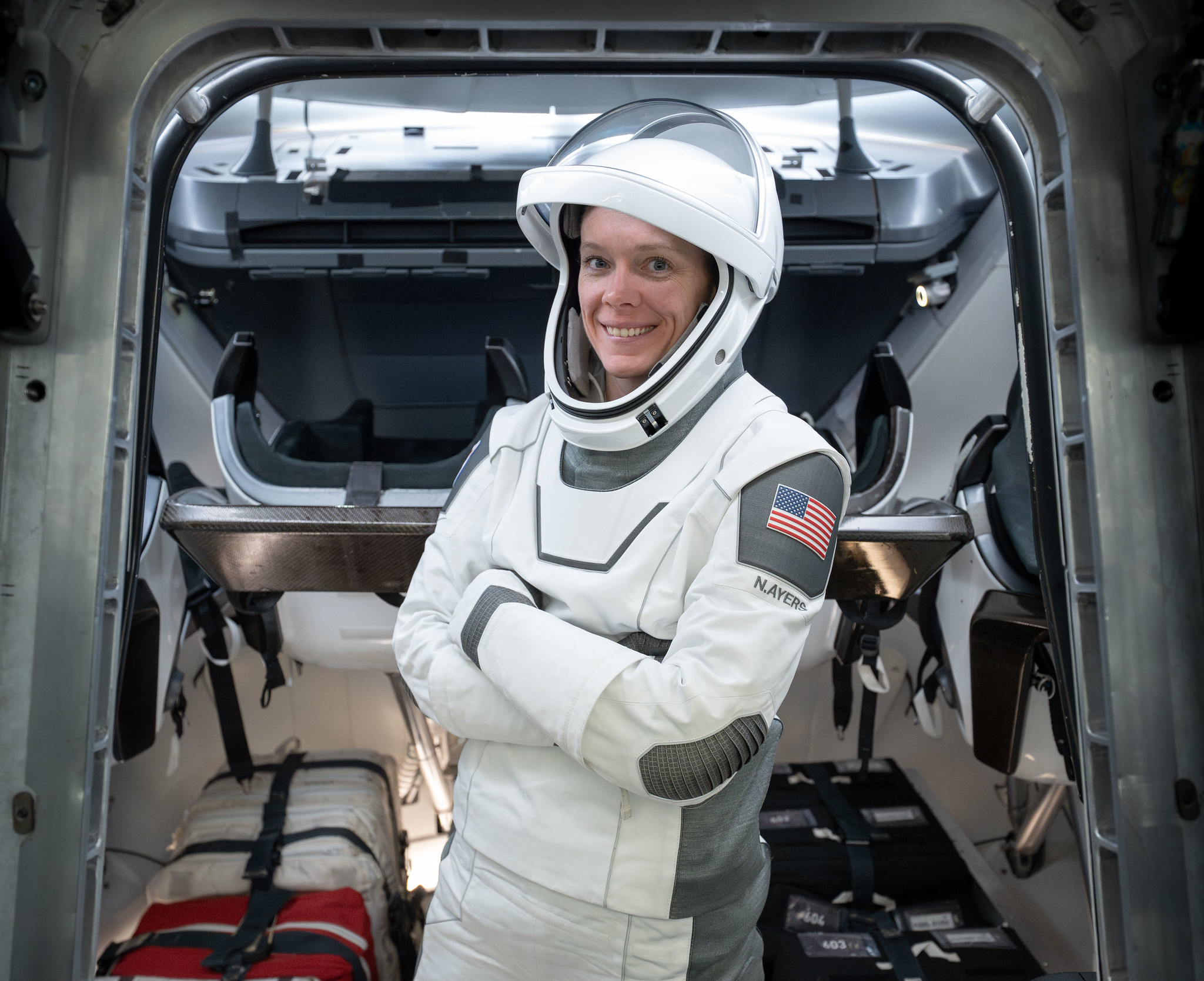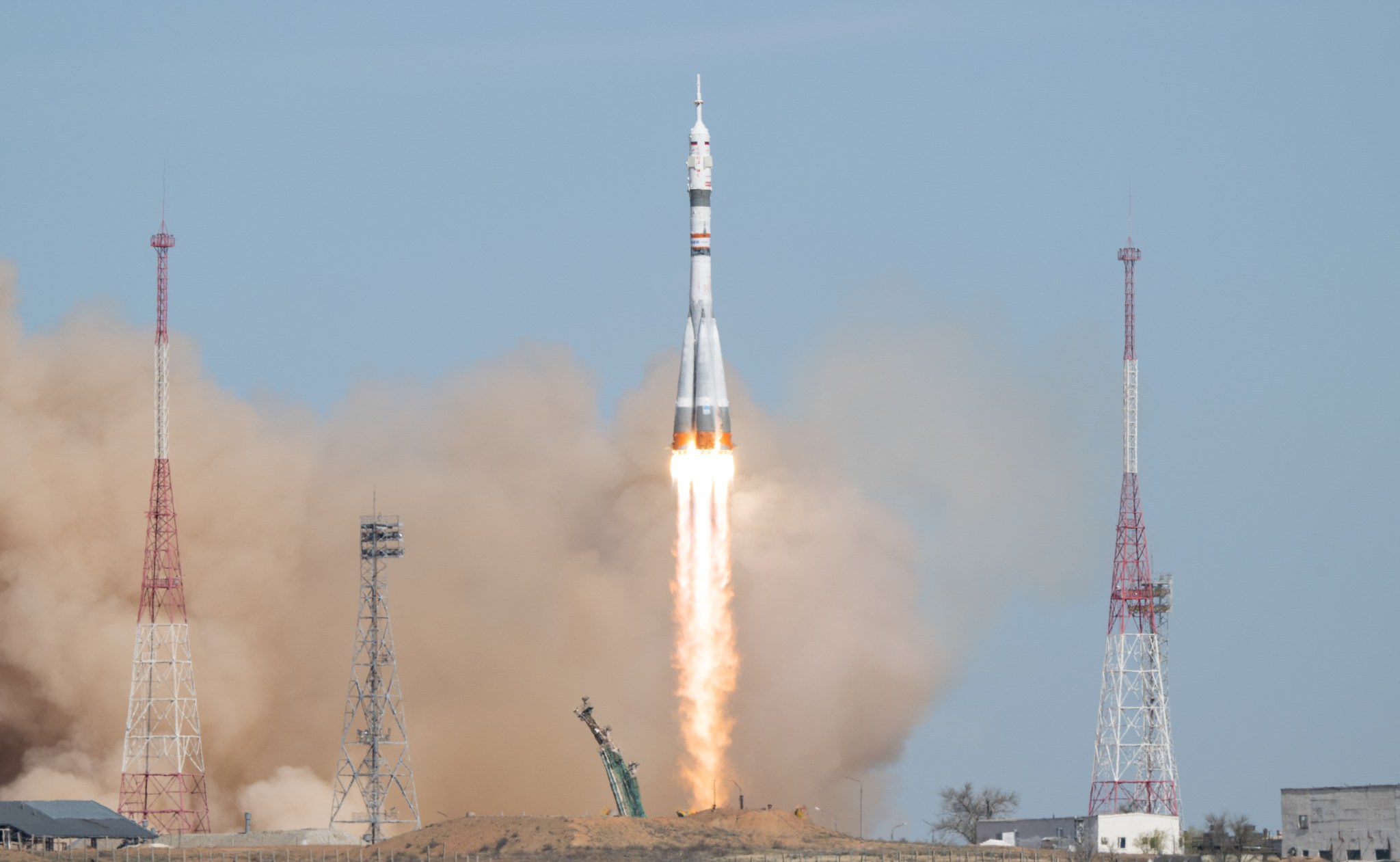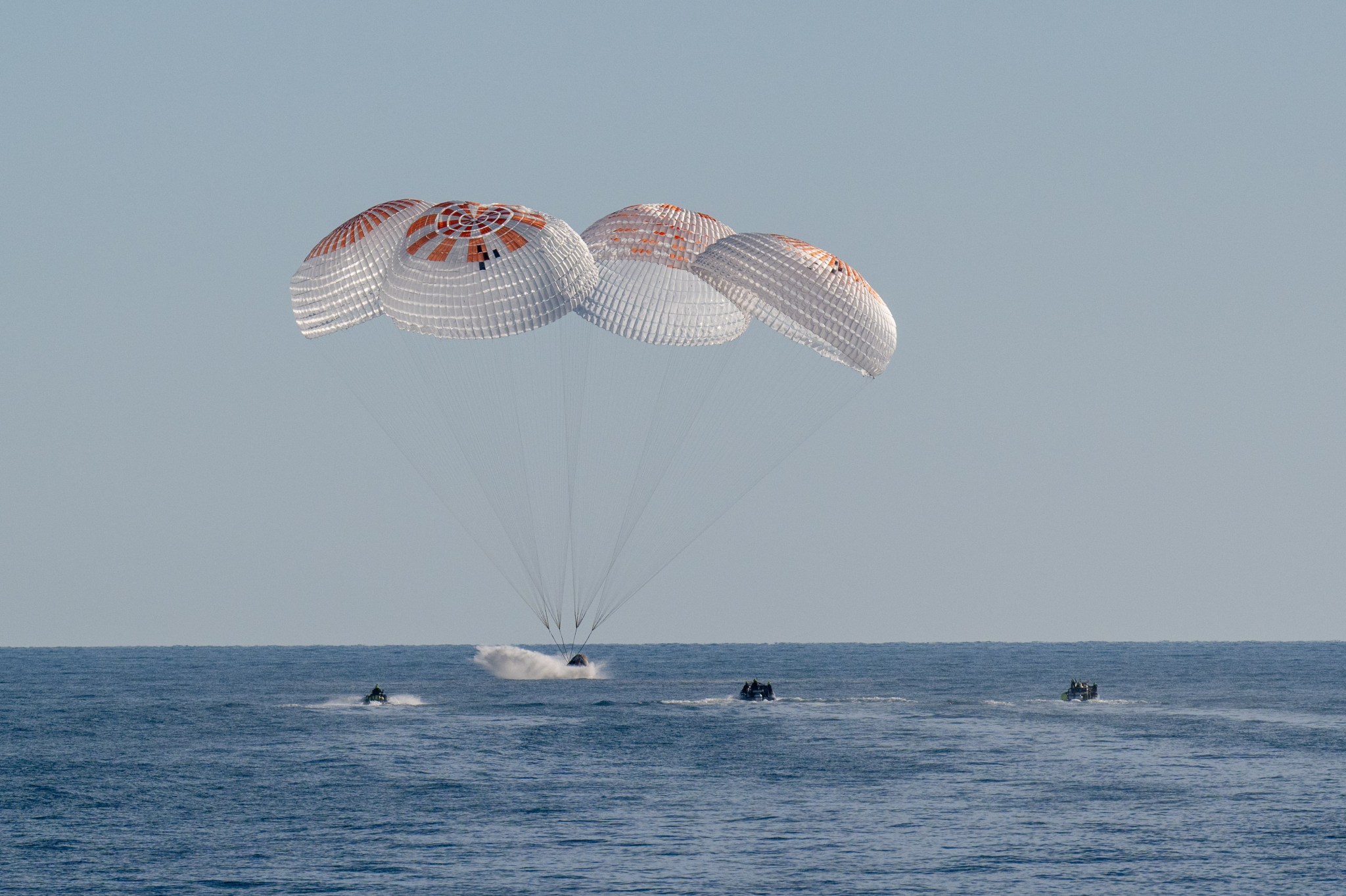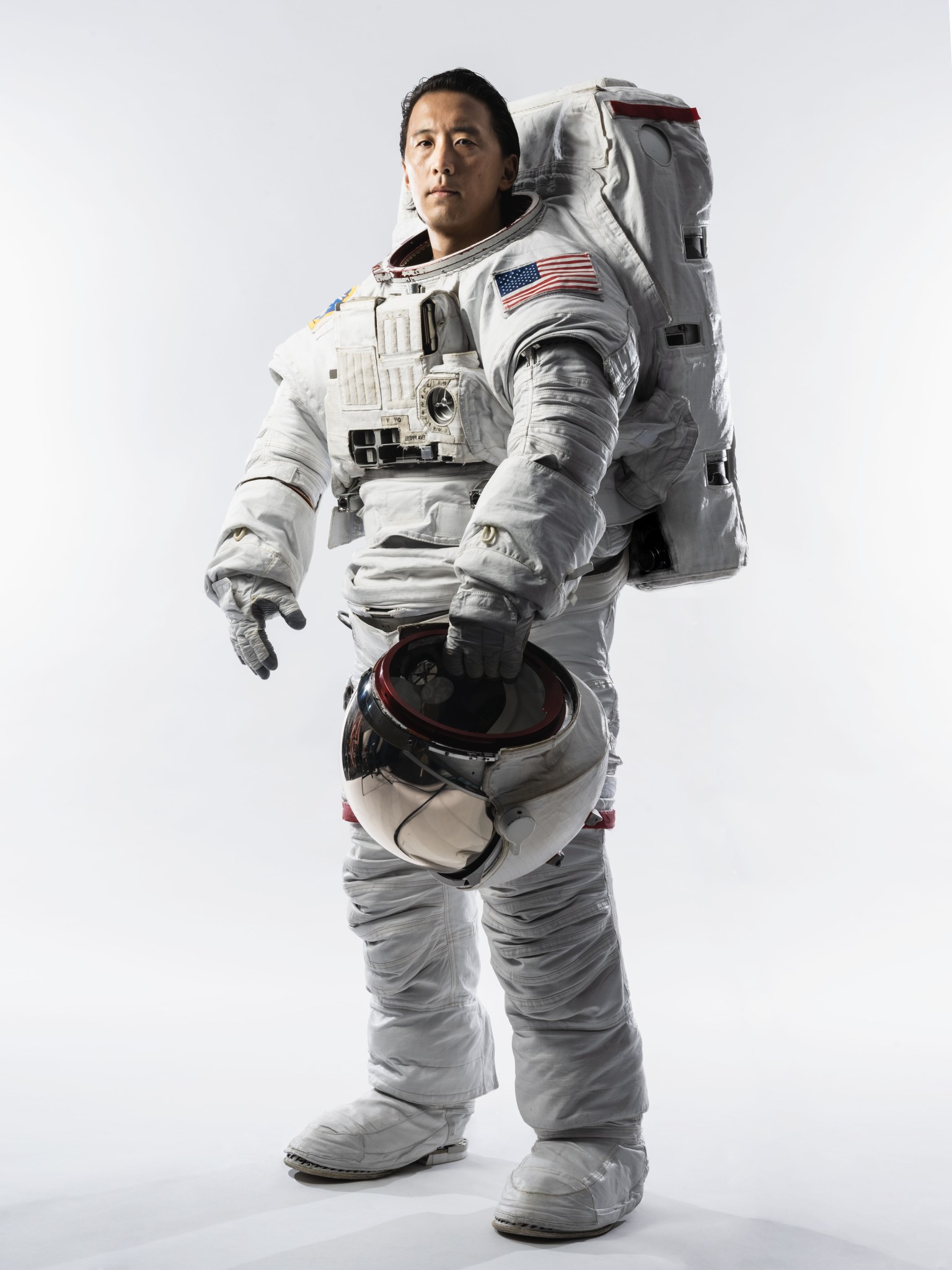A SpaceX Falcon 9 rocket, with the company’s Dragon spacecraft atop, stands at Launch Complex 39A at NASA’s Kennedy Space Center in Florida on Nov. 4, 2024, in preparation for the agency’s SpaceX 31st Commercial Resupply Services mission to the International Space Station. Credit: SpaceX NASA and SpaceX are targeting 4:15 a.m. EDT, Monday, April 21, for the next launch to deliver science investigations, supplies, and equipment to the International Space Station. This is the 32nd SpaceX commercial resupply services mission to the orbiting laboratory for the agency. Filled with…
Read MoreTag: International Space Station (ISS)
NASA Sets Coverage for Astronaut Don Pettit, Crewmates Return
This long-duration photograph highlights the Roscosmos segment of the International Space Station with the Soyuz MS-26 spacecraft docked to the Rassvet module. Star trails and Earth’s atmospheric glow also are pictured from the orbital outpost as it soared 258 miles above the Pacific Ocean. Credit: NASA NASA astronaut Don Pettit, along with Roscosmos cosmonauts Alexey Ovchinin and Ivan Vagner, will depart the International Space Station aboard the Soyuz MS-26 spacecraft and return to Earth on Saturday, April 19. Pettit, Ovchinin, and Vagner will undock from the orbiting laboratory’s Rassvet module…
Read MoreStation Nation: Meet Nick Kopp, SpaceX Dragon Flight Lead
Nick Kopp is a Dragon flight lead in the Transportation Integration Office at Johnson Space Center in Houston. He is currently leading NASA’s efforts to prepare, launch, and return the agency’s 32nd SpaceX commercial resupply services mission. He works directly with SpaceX and collaborates with NASA’s many internal, external, and international partners to ensure the success of this and other cargo missions to the International Space Station. Read on to learn about his career with NASA and more! Nick Kopp’s official portrait. NASA/Bill Stafford The time and effort spent building,…
Read MoreNASA’s SpaceX 32nd Resupply Mission Launches New Research to Station
4 min read Preparations for Next Moonwalk Simulations Underway (and Underwater) NASA and SpaceX are launching the company’s 32nd commercial resupply services mission to the International Space Station later this month, bringing a host of new research to the orbiting laboratory. Aboard the SpaceX Dragon spacecraft are experiments focused on vision-based navigation, spacecraft air quality, materials for drug and product manufacturing, and advancing plant growth with less reliance on photosynthesis. This and other research conducted aboard the space station advances future space exploration, including missions to the Moon and Mars,…
Read MoreExpedition 73 Crew Launches to International Space Station
NASA/Joel Kowsky A Soyuz rocket launches to the International Space Station with Expedition 73 crew members including NASA astronaut Jonny Kim on Tuesday, April 8, 2025, at the Baikonur Cosmodrome in Kazakhstan. The crew arrived at the space station the same day, bringing the number of residents to 10 for the next two weeks. Expedition 73 will begin on Saturday, April 19, following the departure of NASA astronaut Don Pettit and Roscosmos cosmonauts Alexey Ovchinin and Ivan Vagner, as they conclude a seven-month science mission aboard the orbiting laboratory. Throughout…
Read MoreNASA Astronaut to Answer Questions from Students in Florida
NASA astronaut and SpaceX Crew-10 Pilot Nichole Ayers. Credit: SpaceX Students from Dade City, Florida, will have the chance to connect with NASA astronaut Nichole Ayers as she answers prerecorded science, technology, engineering, and mathematics-related questions from aboard the International Space Station. Watch the 20-minute space-to-Earth call at 1 p.m. EDT on Friday, April 11, on NASA+ and learn how to watch NASA content on various platforms, including social media. The event, hosted by Academy at the Farm and open to students and their families, will occur in Dade City.…
Read MoreMeet Alex Olley: Air Force Veteran Powering the Space Station
As an Air Force veteran from Spartanburg, South Carolina, Alex Olley now serves as a contract specialist in the International Space Station Procurement Office at NASA’s Johnson Space Center in Houston. Olley joined NASA as a Pathways intern in January 2023 to turn his lifelong goal into a reality—bringing his unique experience in the defense and space industries to support one of humanity’s most ambitious endeavors. Official portrait of Alex Olley. NASA Olley manages the procurement of supplies, services, and research for the International Space Station. His role requires sharp…
Read MoreNASA Astronaut, Crewmates Arrive Safely at Space Station
A Soyuz rocket launches to the International Space Station with Expedition 73 crew members: NASA astronaut Jonny Kim, and Roscosmos cosmonauts Sergey Ryzhikov and Alexey Zubritskiy, onboard, Tuesday, April 8, 2025, at the Baikonur Cosmodrome in Kazakhstan. Photo Credit: (NASA/Joel Kowsky) NASA astronaut Jonny Kim, accompanied by Roscosmos cosmonauts Sergey Ryzhikov and Alexey Zubritsky, arrived at the International Space Station on Tuesday, bringing the number of residents to 10 for the next two weeks. The Soyuz MS-27 spacecraft carrying Kim, Ryzhikov, and Zubritsky docked to the Prichal module at 4:57…
Read MoreBack to Earth, Forward to the Future: NASA’s SpaceX Crew-9 Returns
After months of groundbreaking research, exploration, and teamwork aboard the International Space Station, NASA’s SpaceX Crew-9 has returned to Earth. NASA astronauts Nick Hague, Suni Williams, and Butch Wilmore, as well as Roscosmos cosmonaut Aleksandr Gorbunov, splashed down safely on March 18, 2025, as a pod of dolphins circled the Dragon spacecraft near Tallahassee, Florida. NASA astronauts Nick Hague, Suni Williams, Butch Wilmore, and Roscosmos cosmonaut Aleksandr Gorbunov aboard the SpaceX Dragon spacecraft in the water off the coast of Tallahassee, Florida, March 18, 2025. NASA/Keegan Barber Williams and Wilmore…
Read MoreNASA Astronaut Jonny Kim
NASA/Josh Valcarcel NASA astronaut Jonny Kim poses for a portrait while wearing a spacesuit on July 17, 2024. In his first mission, Kim will serve as a flight engineer during Expedition 72/73 on the International Space Station. He will launch aboard the Soyuz MS-27 spacecraft on Tuesday, April 8. Chosen by NASA in 2017, Kim is a decorated naval officer and medical doctor. He completed two years of training as an Astronaut Candidate; training included technical and operational instruction in International Space Station systems, Extravehicular Activities Operations, T-38 flight training,…
Read More